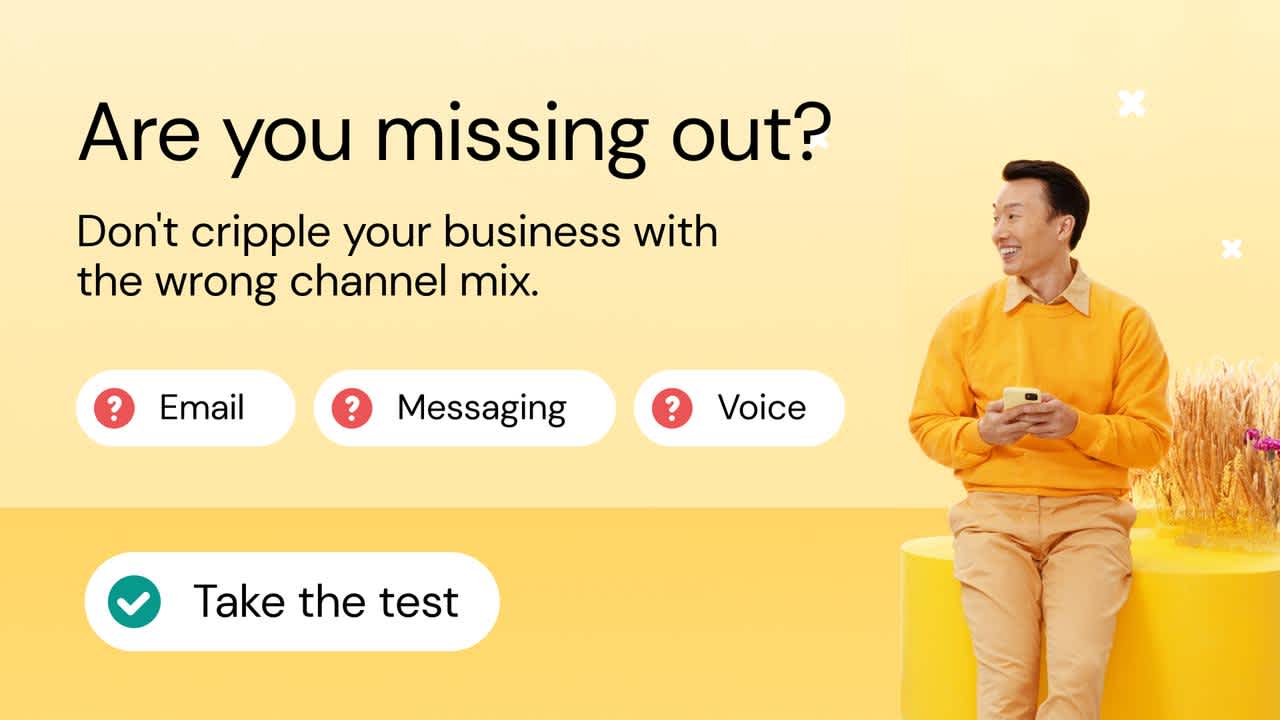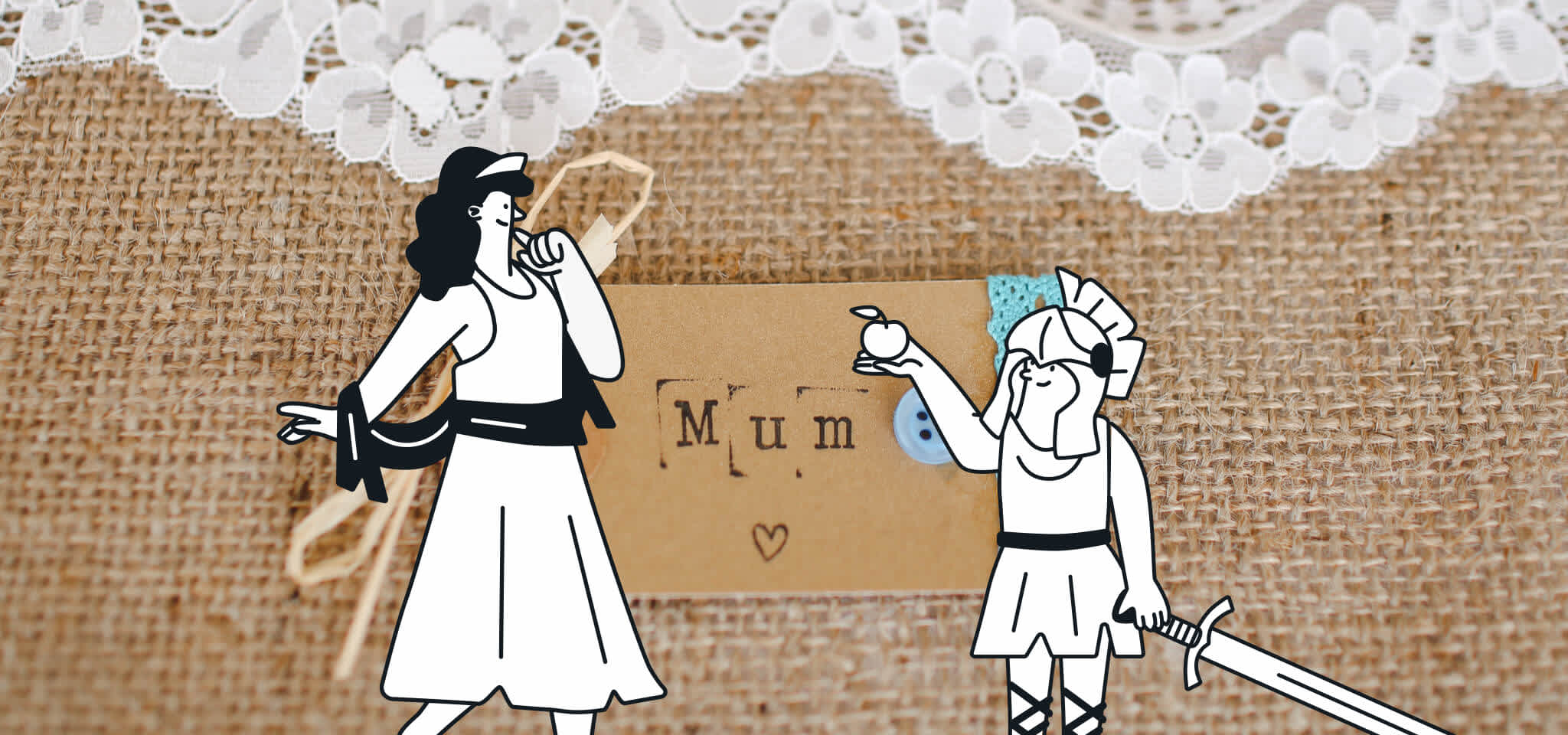Marketing
SMS and email marketing: What do your customers really want?
What works better, email or SMS? How do people expect to hear from your brand? Find out what a survey of U.S. consumers reveals about their preferences. Decide for yourself when an email or a text is the right choice for your marketing strategy.

PUBLISHED ON
In show business, the saying goes, “Give the people what they want...” It’s simple yet solid advice for anyone trying to develop an effective marketing strategy too. That includes the communication channels you choose to use.
So, do your customers want messages delivered via email or SMS? Do you really have to choose?
A new report from Sinch dives into the opinions of U.S. consumers to find out how they want to hear from brands. The art and heart of meaningful customer connections includes survey results and much more. We’ll check out some of the key findings after we compare the ins and outs of SMS and email marketing.
Table of contents
SMS and email open rates
Message length for texts and emails
SMS and email marketing engagement
Subscriber experience
Cost effectiveness
Regulations and compliance
SMS and email security concerns
Marketing and promotional messages
Transactional communication
Table of contents
02Consumer preferences for email and SMS
SMS and email have history
The truth is, email and SMS kind of grew up together like a brother and sister. Here’s how and when it all started...
Most people believe the invention of email took place in 1971. At first, it was only available to people using those gigantic computers that pioneers of the internet had to share. But as access to personal computers and the internet grew, so did the need for a way to communicate. And the rest is email history.
The history of text messaging starts in the UK during the early ‘90s just as checking email was becoming a regular habit. A British software engineer developing SMS for Vodafone first texted “Merry Christmas” to a colleague in 1993. Texting would really take off with the rise of mobile phones about a decade later.
Today, there are plenty of other digital communications channels you can use to reach people. That includes MMS and RCS messaging, which are richer versions of SMS. There’s also social media marketing, chatbots, and over-the-top (OTT) messaging channels like WhatsApp and Facebook Messenger.
However, if you need to choose the two most important channels for communication and marketing, you can count on SMS and email. They’re the OGs of digital customer communication.
Email | SMS | |
|---|---|---|
Open rates | Between 15% and 25%. | Greater than 90%. |
Email | ||
Message length | Unlimited | 160-character limit. |
SMS | ||
Engagement | 3% to 5% clickthrough rate. | 20% to 35% clickthrough rate. |
Experience | Allows for robust, interactive experiences. But email client support varies. | Mostly limited to text and links. (Excluding MMS and RCS) |
Cost effectiveness | Relatively inexpensive with high ROI. | Relatively inexpensive with high ROI. |
Regulations | Subject to GDPR and other consumer privacy laws. | Subject to GDPR as well as the TCPA and other consumer privacy laws. |
Security | Phishing emails are the biggest security threat vector. | SMS phishing (smishing) is on the rise. |
SMS and email open rates
According to a comparison of email and SMS from Sinch, texts have an average 98% open rate. That almost seems unbelievable until you consider how often you leave your own texts unopened (not so often, do you?). Another factor may be that many SMS messages from brands are transactional texts, which recipients are actively expecting.
Depending on whose benchmarks you look at and what industry you’re in, typical email open rates are between 15% and 25%. The truth is, the inbox is a very crowded place, and standing out is one of the biggest email marketing challenges.
Text messages have a sense of immediacy around them. But subscribers may wait to read an email, and then it gets buried under new messages. That’s one reason why smart email marketers who send meaningful campaigns are such a great asset. They know how to get good email open rates.
Message length for texts and emails
There’s a reason SMS stands for Short Message Service. An SMS message is limited to 160 characters. That’s not much. Using an emoji in SMS messages will reduce the length to just 70 characters. However, for longer communications, you can break things up into a series of short texts.
The positive side of that 160-character restriction is that it makes you choose your words carefully, crafting SMS messages that prioritize being clear and concise. That’s also why text communication works well for many transactional messages.

SMS character limits make it best for short messages
There are no text limitations with email marketing. Your campaigns can have as few or as many words as you need to get the message across. (And you can go crazy with emojis in email too, if you really want.) Of course, just because you can write a long marketing email doesn’t mean you should. But at least email provides that flexibility.
SMS and email marketing engagement
Like open rates, it seems SMS marketing has an edge over email when it comes to other engagement, such as a click rates.
According to SMS marketing statistics from Sinch SimpleTexting, text messages enjoy a clickthrough rate (CTR) between 21% and 35%. In email marketing, clickthrough rates vary widely by industry. But in general, if your CTR for an email campaign is around 5%, you’re doing pretty well.
Keep in mind, however, that email marketing can offer subscribers much more to engage with. While an SMS will be a few lines of copy with a CTA and a shortened link, measuring engagement in an email campaign reveals subscribers’ preferences and behaviors. You can also continuously improve email engagement and text marketing with A/B testing. It’s just that there are more elements to test in an email.
For more insights into what convinces consumers to engage with your emails, check out some key takewaways from Sinch Mailjet’s email engagement report.
Subscriber experience
In comparison to basic text messaging, HTML emails offer more flexibility with design and overall experience. While SMS messages mainly deliver text and links, email gives you a lot more to work with.
Email developers and designers can work together to create compelling campaigns with eye-catching visuals and creative calls-to-action (CTAs). You can add animated GIFs, buttons, product images, and more. Advanced tactics can include email marketing trends like dynamic content and interactivity.
We should point out, however, that other forms of mobile messaging do offer a lot more in terms of the subscriber experience. Beyond SMS, there are Multimedia Messaging Service (MMS) and Rich Communication Service (RCS).

Example of an RCS mobile messaging campaign.
Here’s a good way to describe the differences:
SMS is like a simple, plain text email.
MMS is more like an HTML email. There are fewer limitations and more possibilities for design as well as short videos (which are tough to do in email).
RCS is like a dynamic marketing email with interactivity. It’s sometimes described as providing an “app-like experience.”
Creating a well-designed email experience isn’t without its challenges. Services like Gmail, Apple Mail, and Outlook render emails differently, which means sometimes your campaigns look messed up in certain inboxes. That’s why Sinch Mailjet offers inbox previews with select plans. This lets you see how things look on different clients and devices before you hit send.
Check out an Email Camp presentation with answers to common questions about using email and SMS to create a better experience for your customers.
Cost effectiveness
Both SMS and email marketing are very cost effective. Your actual investment will vary depending on your sending volume and the platforms you use to create, deliver, and manage email and text messages. Where you and your recipients are located in the world can also impact SMS pricing.
It’s tough to find reliable benchmarks for the return on investment (ROI) of SMS marketing. And the aspirational number that gets thrown around for email ROI (4,000%, really?) is a bit controversial.
To accurately determine the ROI of a marketing channel, you don’t need an average, you need to look at your own investments and returns. Check out our article on calculating ROI for more.
The bottom line, however, is that you’ll get the most out of your investments into SMS and email when you use them strategically and add value for recipients.

Regulations and compliance
As with cost effectiveness, the rules around email and SMS marketing are similar.
International laws such as the EU’s General Data Protection Regulation (GDPR) apply to both SMS and email. For recipients in the U.S., SMS marketers must abide by the Telephone Consumer Protection Act (TCPA), which includes text messaging. But basically, staying in compliance with email or SMS marketing means following some best practices for privacy protection.
International laws such as the EU’s General Data Protection Regulation (GDPR) apply to both SMS and email.
If you want to send marketing messages to people on either of these channels you must:
Obtain consent or have an opt-in process
Provide a way to opt-out or remove consent
Protect sensitive data aka known as personally identifiable information (PII)
Explicit consent is when someone knowingly and intentionally subscribes. That permission is required before you can send promotional emails and text marketing. A good way to ensure you have consent is to use a double opt in to confirm new subscribers. It's a process that works well for both SMS and email.
Regulations around transactional messages are a bit different than commercial texts and emails. If the message’s primary purpose is non-promotional and it contains necessary information, you do not need explicit consent to send transactional emails or texts. Instead, a previous relationship or action, such as a purchase or account creation, indicates implied consent.
Keep in mind, while order confirmations, password resets, and two-factor authentication are considered necessary, appointment reminders may not be. Both the TCPA and GDPR require senders to get permission before delivering reminders via text or email.
SMS and email security concerns
Because so many people use email and SMS, the two channels are also beloved by spammers and cybercriminals. In fact, it’s estimated around 90% of cyber-attacks start with a phishing email. However, the use of text messaging for nefarious purposes is on the rise. There’s even a name for phishing with SMS. They’re calling it “smishing.”
A recent trends report from APWG (Anti-Phishing Working Group) found that smishing attack volumes rose 30% from the last quarter of 2023 to the first quarter of 2024.
As with email, brand spoofing is becoming a big problem in text messaging. It often works like this... Attackers send messages claiming to be the recipient’s bank, wireless carrier, or a charity the person has supported. Then, the scammers try to obtain sensitive data or install malware using a malicious link.
In email marketing, the best way to thwart this kind of attack and protect your subscribers is with authentication protocols: SPF, DKIM, and DMARC. In 2024, Gmail and Yahoo introduced bulk sender requirements mandating the use of all three methods to verify the identity of an email sender.
Consumer preferences for email and SMS
Sinch’s survey exploring consumer opinions on brand communications also questioned U.S. business about their use of different channels. Results show 92% of businesses are using email to reach customers and 73% use SMS. No other channel exceeded SMS and email. That may not be a huge surprise. But it does show that businesses view these channels as the two most important ways to reach customers.
So, what about consumers? Sinch asked survey participants to choose their top channel for a variety of different scenarios. You’ll notice a pattern in some of these key findings...
Marketing and promotional messages
Whether it’s email addresses or mobile phone numbers, not everyone on your lists is a paying customer...yet. B2C companies will try to use SMS and email as well as other channels like social media to turn those people into purchasers.
Sinch’s survey found that 36% of U.S. consumers want those pre-purchase communications delivered to the email inbox. Another 28% would choose text marketing.
After someone makes an initial purchase, B2C companies will often use SMS and email to keep customers coming back, or at least to keep them connected and engaged with the brand. The Customer Connections report found 39% of consumers prefer email for promotions while 21% prefer SMS.

It’s true that an email lets senders deliver things like product images and graphics in promotional campaigns. What’s also true is that MMS provides a way to deliver multimedia through consumers’ messaging applications. In reality, if a consumer prefers SMS, it’s highly likely they’re just as open to MMS campaigns.
If you combine the results for email SMS, and MMS, it covers 70% of consumer preferences for receiving marketing messages.
Senders with a more advanced marketing program make their campaigns extra relevant with segmentation and personalization. But where do consumers prefer getting messages personalized with offers and product suggestions that are just for them?
Sinch’s survey results show email and text are the best places to deliver things like campaigns with personalized recommendations for individual subscribers. As with typical promotions, 39% of consumers chose email. This time 18% of respondents said they prefer SMS and another 11% picked MMS.

Transactional communication
Transactional messages are important communications triggered by a specific event or action. It could be an online purchase that triggers an order confirmation, or a login attempt that requires two-factor authentication (2FA). While they may not be part of your marketing strategy, transactional messages are directly connected to a convenient customer experience.
Sinch’s report asked consumers about their channel preferences for several different transactional message types. As you can see below, in every instance, SMS and email were the most preferred individual channels.

Sinch survey shows email and SMS are preferred for transactional messages.
For example, with order confirmations, 37% of consumers would prefer email while 23% would choose a text message sent via SMS. Together, that’s 60% of consumers who’d choose either SMS or email for an order confirmation.
Since SMS and MMS are simply different types of text messages, you could consider them the same channel and combine results. In that case, email and texting are even closer in terms of consumer preferences.
When verifying user identity, 27% of consumers chose SMS while another 9% chose MMS. That combined result (36%) exceeds the 33% who’d prefer email for identity verification.
A big benefit of SMS is that it’s fast, reliable, and hard to ignore. When a user needs to gain access to an account or reset a password, they don’t want to wait. A text message may also be more likely to grab their attention if the message is urgent, such as a notification about potentially fraudulent activity.
The advantage of using both SMS and email
By now, it’s probably clear what the recommendation is going to be... Your business shouldn’t choose between these channels. The best way to provide meaningful customer communications is to offer both email and SMS.
Making text messaging and email part of your strategy means:
You’re focused on the two channels most consumers prefer.
You can easily reach people on both desktops and mobile devices.
You can provide clear communication throughout the customer journey.
You’ll be supporting an ideal customer experience for most contacts.
SMS and email make an excellent team. You can use them in tandem to make your marketing strategy more effective than with one channel alone.
Here’s how the brand Postino used email and text marketing for an end of summer campaign. They sent an email containing fun and valuable content with tips on entertaining guests. Then, they followed up with a more time-sensitive text.

An email delivers content, various imagery, and a creative CTA.

A time-sensitive text message encourages foot traffic and engagement.
Some ecommerce brands use both email and text message marketing for abandoned cart campaigns. An email may arrive 30 minutes after someone leaves an item in their online cart. Then, a text reminder shows up four hours later, encouraging immediate action before the item is removed.
SMS and email work together well for large promotional campaigns too. An initial email with lots of design and imagery could announce a big sale. Then, on the last day of the promotion, a text could encourage contacts to take advantage before the sale ends.
Use SMS to quickly deliver important information and reminders or to encourage immediate action. Use email to make big announcements and deliver long-format content such as newsletters.
If you’re already using Sinch Mailjet or a service like it for your email marketing, here are a few options for adding text marketing to your mix:
Sinch SimpleTexting is an ideal and easy-to-use platform for small businesses and non-profits.
Sinch MessageMedia is an excellent solution for those using popular platforms like Hubspot, Shopify, and BigCommerce. It also includes a feature to convert emails into SMS.
The SMS API from Sinch is a more technical solution that gives you more control and allows you to integrate text messaging in a variety of ways.
The evolution of customer communication
For many businesses, optimizing a communication strategy around SMS and email makes good sense... for now. However, the one constant in digital marketing is change.
At the start of this article, we mentioned the saying “Give the people what they want...” Here’s what Steve Jobs had to say about that idea:
“Some people say, ‘Give the customers what they want.’ But that's not my approach. Our job is to figure out what they're going to want before they do.”
Steve Jobs
Don’t be surprised if some of the less popular channels become more commonly used among the people you want to reach. WhatsApp Business messaging is a good example of that. While it’s already a popular service in other parts of the world, U.S. consumers are a fast growing segment for WhatsApp.
A potential downside of SMS and emails’ popularity is that – not only do most of your customers use them – so do most of your competitors. Investing in other channels as an early adopter could pay off by helping your messages stand out. That’s what happened when frozen food retailer Picard chose to take a chance on RCS. They saw a 42% increase in customer engagement over the holidays.
Wondering where it’s best to invest your time, energy, and budget into customer communications? Sinch put together a free channel evaluation. Just answer a few questions to get a personalized assessment with recommendations.









